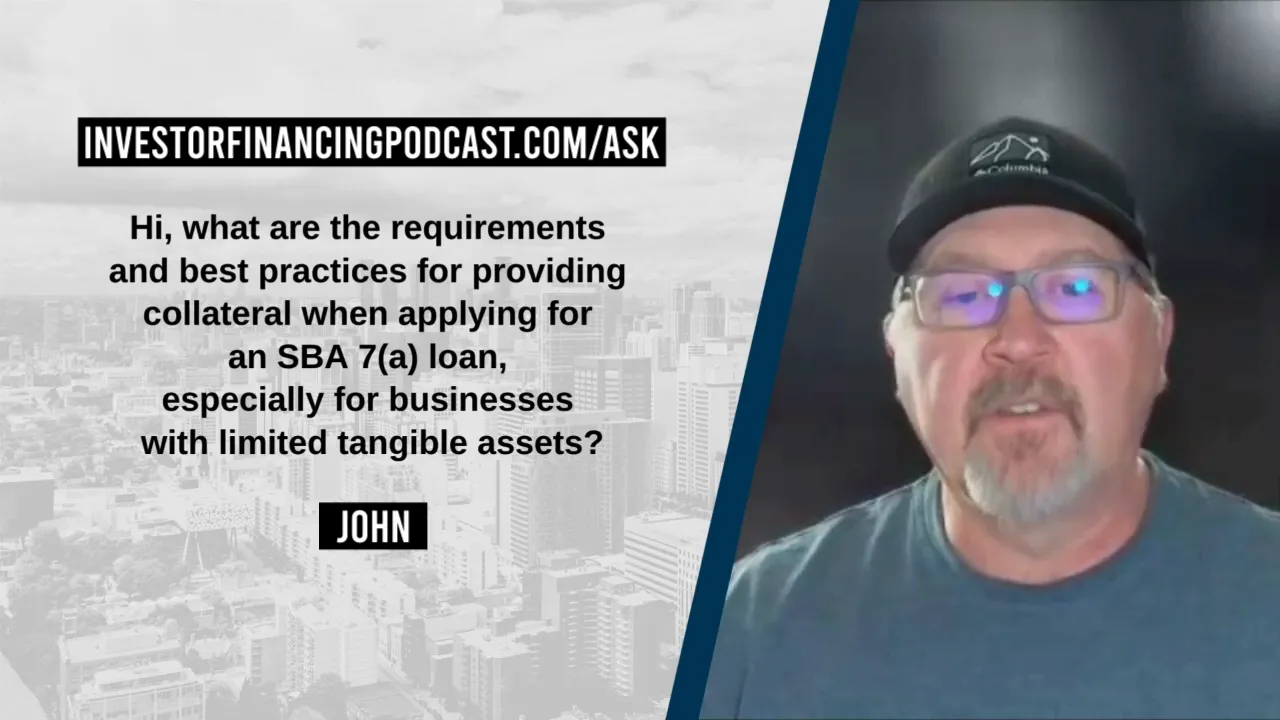I'm Beau Eckstein, Business Ownership Coach and host of the Investor Financing Podcast. If you’re exploring how to finance a business purchase or growth with limited tangible assets, you’re in the right place. In this article I’ll walk you through practical collateral requirements and best practices for SBA 7(a) loans, explain creative equity-injection strategies, and share examples and tactical steps you can use to structure a winning loan application. Business Ownership Coach | Investor Financing Podcast is focused on helping entrepreneurs fund and scale their businesses, and this guide distills the most useful approaches I share with clients every day.
Understanding SBA 7(a) Collateral Basics

The SBA 7(a) program is one of the most flexible financing tools for small business acquisitions and working capital, but applicants often get confused about collateral. The short answer: the SBA’s guidelines allow substitution of collateral, but in practice most lenders will want to see a meaningful equity injection rather than rely on substitution alone.
Lenders focus on cash flow and borrower commitment. Even when tangible collateral is limited, showing that you have meaningful skin in the game (an equity injection) dramatically improves your chances. From an underwriting perspective, collateral is a secondary mitigant — the primary consideration is whether the business cash flows can support the loan payments.
Throughout this article I’ll refer back to specific strategies that satisfy both the SBA’s rules and lenders’ practical expectations. Remember: Business Ownership Coach | Investor Financing Podcast advice always centers on structuring deals lenders can underwrite without surprises.

Photo by Cova Software on Unsplash
Equity Injection: What Lenders Expect
Let’s walk through a concrete example I often use when coaching buyers. Suppose the total project or acquisition cost is $1,000,000. Under favorable circumstances you might secure an SBA 7(a) loan of $900,000, assuming the business’ cash flow supports that debt.
That means you, the buyer, need to supply the remaining $100,000 as equity. Lenders want to see that equity comes from legitimate sources — cash on hand, funds borrowed against other qualifying assets, seller financing, or contributions from a minority partner. The goal is to demonstrate both capacity to close and alignment of interests between buyer and seller.
Key point: even if the SBA’s written rules allow certain substitutions, many banks are conservative and prefer visible equity. I always recommend preparing clear documentation that shows where the injection is coming from and how it will be delivered at closing.
Seller Financing and Standby Notes — A Smart First Look
One of the best places to start is always seller financing. If the seller is willing to carry back a portion of the purchase price on a standby basis, that can count as equity under SBA rules and make your day of closing much easier.
In the earlier example, if the seller carries back $75,000 on a full standby for at least the first two years, many lenders will treat that as the seller leaving equity in the deal. Under SBA guidance, a standby arrangement — properly documented — can substitute for a portion of cash equity. That reduces the cash you must bring to closing.
Practical tip: ensure the standby instrument clearly documents the deferment period (for example, two years of no payments) and that it complies with SBA standby rules. Lenders will want to see the note, the deferment terms, and evidence the seller agrees to subordinate appropriately.
Photo by Amina Atar on Unsplash
Alternative Equity Sources: When Tangible Collateral is Limited
Not every buyer has liquid cash or a helpful seller. If you lack tangible assets tied to the business you’re buying, consider these alternatives for the equity injection:
- Home equity line or equity on rental properties: If you own real estate with usable equity, a HELOC or second mortgage can provide the cash injection. Be mindful: the new payment has to be reflected in underwriting so the debt service coverage still works.
- Equipment-based financing: If you own equipment outside of the target business, you may be able to obtain an asset-based loan and use the proceeds as your equity injection. Again, the lender will test your ability to service the combined payments.
- Minority partner contribution: Bringing in a partner who owns less than 20% and provides the required equity is a common approach. This preserves control for the primary buyer while satisfying equity requirements.
Whatever route you choose, communicate the strategy early to your banker or loan advisor. A mismatch between how you plan to fund the injection and how the lender interprets underwriting rules is one of the most common causes of delays or denials.

How Underwriting Sees Payments — Avoiding Common Pitfalls
Underwriting is unforgiving when it comes to recurring payments. If you fund your equity injection with a loan that creates an additional monthly payment, the underwriter will include that payment in the debt service calculations. If the boost in monthly obligations makes the debt service coverage ratio insufficient, you’ll have a problem.
That’s why strategies that don’t create immediate cash flow obligations — like seller standby financing with no payments for a defined period — are attractive. If you must use borrowed funds for your injection, run the numbers with the lender up front and ensure the payment is still supportable by business cash flows.
Also, be honest and upfront about the source of funds. Document transfers, loan agreements, and the timing of funds so the bank can see the funds are legitimate and properly available at closing.
Photo by Amina Atar on Unsplash
Practical Steps & Best Practices to Structure Your SBA 7(a) Application
Here’s a concise checklist to follow when you’re preparing to apply for an SBA 7(a) with limited tangible collateral:
- Start with seller financing discussions: Ask the seller if they’ll provide a carryback or standby note. This is often the easiest way to reduce your cash injection requirement.
- Inventory personal and non-target assets: List any rental properties, equipment, or other assets that can be monetized or used to secure an interim loan to fund the injection.
- Talk to your banker early: Share your proposed equity strategy and let them tell you whether it will pass underwriting. If you’re working with an advisor (I can help), make sure the strategy is tailored to the lender’s preferences.
- Run the debt-service math: Include any new payments from HELOCs or asset loans in underwriting simulations. If payments push coverage below acceptable levels, adjust the structure.
- Consider a minority partner if needed: A partner under 20% can provide capital without requiring management control changes.
- Document everything: Provide clear evidence of the source of funds, the timing, and any deferment terms for seller financing.
Following these steps will help you position your application for approval. As a Business Ownership Coach | Investor Financing Podcast host, I emphasize practical, banker-friendly structuring rather than clever accounting that trips up underwriters.
Conclusion — Putting It Together

To summarize: the SBA allows substitution of collateral on paper, but in practice most lenders want to see a credible equity injection. Start by exploring seller financing — standby notes can often satisfy lender requirements — then consider other sources like HELOCs, equipment loans, or a minority equity partner. Always align with your banker early and run the numbers so underwriting won’t be surprised by additional payments.
If you want personalized help structuring an acquisition or financing plan, book a call at bookwithbeau.com. I regularly help buyers find the right approach and prepare lender-friendly presentations that get approvals. Business Ownership Coach | Investor Financing Podcast is here to help you navigate those decisions and get you across the finish line.


